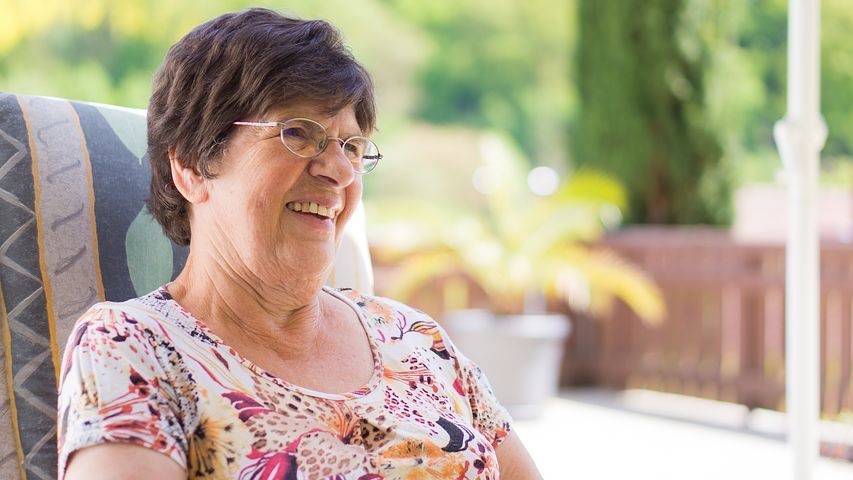Find Assisted Living in Your Area

In 2021, almost one in four people aged 65 to 74 reported having a disability. That figure rose to 46% for Americans aged 74 and older.
As there’s such a high number of older adults living with a disability, housing for seniors is often designed with accessibility in mind. However, the wide variety of disabilities experienced by Americans means that there’s no single solution to suit everyone. There are residential choices that offer a community of support, such as assisted living. On the other hand, some seniors may prefer to remain living independently and get help in the home.
This guide has information about the different senior and other living options that may suit older adults with a disability. It can help seniors and their families make a choice that preserves and protects their health, dignity and happiness.
What Are Assisted Living and Housing Options for People with Disabilities?
Each disabled person is unique, with different strengths and challenges. The best type of housing will depend on a person’s health and limitations, but may include assisted living, in-home care and group homes.
Assisted Living Communities
Assisted living facilities provide individual rooms or apartments to seniors in a community setting. Facilities help people with activities of daily living and take care of cleaning, cooking and providing transportation for residents. Services are tailored so residents can continue to take care of their own needs as much as possible.
There are amenities that can range from beauty salons to swimming pools all on the same campus, and regular activities to encourage engagement with friends and neighbors.
The national average cost for assisted living is $4,500 a month, though prices can vary greatly based on location.
Subsidized Housing

Subsidized housing is also known as public housing and can be offered by the federal, state and local governments. National subsidized housing programs generally limit the person’s rent to 30% of the household income. The most well-known program is Housing Choice Vouchers, which allows people to receive subsidized rent in the general market.
There are also programs designed specifically for seniors and people with disabilities. Properties in these programs offer residents subsidized housing plus access to a range of supportive services. The types of services available differ between each project.
In-Home Care
Home care allows a person to remain living where they are and have caregivers visit in their home. There are two types of care available in the home.
In-home care offers non-medical care and costs an average of $4,957 per month, according to data from 2021. It includes assistance with activities of daily living, housework, chores and transport.
Home health care can provide medical assistance such as skilled nursing, disease monitoring and physical therapy. The average cost is $5,148 per month. It’s possible to utilize a combination of the two types of care depending on a person’s needs.
Skilled Nursing Facilities
Skilled nursing facilities offer intensive medical care to seniors with disabilities. Around-the-clock medical monitoring is available and there are nurses on hand to provide assistance when needed. In addition, residents are assisted with activities of daily living and there are often activities provided to encourage engagement. The high level of care is reflected in the cost, which averages $7,908 for a semiprivate room and $9,034 for a private room as of 2021.
Group Homes and Supportive Housing

Group homes and supportive housing are designed for people who have difficulty maintaining a stable home. They may also be known by different names such as adult foster care.
Service providers generally accept residents with similar conditions and offer support based on their needs. For example, they can help those with chronic illnesses ensure they take medication as prescribed and follow a recommended diet. In addition to health concerns, homes often assist with practical issues such as applying for government benefits.
These homes are generally smaller, with only 5-10 people. They’re often based in converted family homes rather than purpose-built facilities and may not have separate suites or apartments. Although there’s no survey information about average costs, the price is typically lower than assisted living.
What Types of Assisted Living Options Are Best for Different Disabilities?
The disabilities commonly experienced by seniors are grouped into three categories: cognitive disabilities, physical disabilities and intellectual and developmental disabilities (IDD). In many cases, people experience challenges from more than one of these categories. Each has different housing needs.
Cognitive Disabilities
Among older adults, the most common cognitive disabilities are Alzheimer’s disease and similar forms of dementia. Memory care communities are designed to offer specialized care to the growing number of people with dementia. They provide tailored activities, programs to support brain health and a calming environment can help manage symptoms. In addition, secure buildings combat wandering, which is a common symptom.
Physical Disabilities

Physical disability is a broad category that covers anything that impacts a person’s body. The housing needs vary widely depending on the limitations experienced.
Mobility issues are a common concern for older adults. Accessible homes include wide hallways, walk-in showers and elevators that help people move around with a wheelchair or walker. Seniors can also experience sensory disabilities, such as hearing or vision problems. Hearing loops in communal areas can create easier communication for those experiencing deafness. Extra lighting, clear spaces and an absence of tripping hazards can help blind people move around safely and independently.
Intellectual and Developmental Disabilities (IDD)
Intellectual and developmental disabilities refer to a group of conditions that impact a person’s intellectual and social skills. It can include autism, behavior disorder, brain injury and Down syndrome.
People with these types of disability may be prone to outbursts, have difficulty problem solving and lack life skills. Their housing needs to offer more supervision and assistance with practical tasks such as remembering medication, paying bills and keeping up with housework. Many of these conditions affect multiple body systems and people may need physical accommodations as well.
How to Pay for Assisted Living for People and Seniors with Disabilities
According to a 2020 survey, there are approximately 30,500 assisted living communities around America, and the average cost for care is $4,500 per month, or $54,000 annually, although exact costs differ depending on location. Due to these high costs, many use government assistance to pay for their care. While not providing direct funding, programs such as those that help pay for medications can give seniors more money for their assisted living budget.
Social Security
Social Security provides financial assistance to people with a disability and those aged 62 and over. Retirement income is available to seniors and people with low income or assets can receive Social Security Income (SSI). The pension and SSI can be used to pay for assisted living.
Many states also have an Optional State Supplement (OSS). Eligibility criteria and the amount available differ from state to state. However, this funding is often specifically targeted at those in assisted living and money is paid directly to the facility to help cover a recipient’s room and board.
Medicare
Medicare is government health insurance available to people aged 65 and over, as well as those with a disability or specific medical conditions. It doesn’t cover long-term care, such as assisted living or in-home care. However, if a doctor certifies that someone needs medical assistance in the home, home health care may be covered.
Medicaid
Medicaid provides health insurance to low-income families, including older adults and people with disabilities. Although funding comes from the federal government, it’s administered by states and eligibility criteria and coverage differs depending on location.
Home health care and skilled nursing facilities are covered throughout the county. As home and community based care is more economical that nursing home care, most states also offer waivers that help pay for assisted living and in-home care.
Veteran Programs
Eligible seniors who served in the military can access VA Aid and Attendance benefits or the Housebound allowance. These are additional funds added to the monthly pension for people who need help with daily activities or are housebound. Aid and Attendance can be used for assisted living, while the Housebound allowance is generally for those receiving in-home care.
Low-Income Housing Options
The Department of Housing and Urban Development has a range of programs designed to help people on very low incomes pay for housing. These include rent subsidies, income based housing and vouchers. Eligibility is based on income and varies depending on the number of people in the household. Income limits may differ for people with disabilities to reflect their additional healthcare expenses.
How to Find Housing for People and Seniors with Disabilities
The right housing has more than just services and features that help manage a disability. It also has the right culture, location and price. Thankfully, there are many services available to help people find assisted living.
Local Area Agencies on Aging can offer advice and may have services to identify the right long-term care option. AssistedLiving.org trained Family Advisors can answer questions and give more in-depth help. Call (888) 307-1103 for free assistance.
Once a number of options have been identified, it’s best to visit in person to get a feel for the community. Seniors and their families should consider their unique needs and desires when considering a facility. Questions to ask on a tour include:
- What accessibility features are there?
- Are pathways between amenities and buildings easy to navigate?
- What amenities are on offer?
- What transportation options are available?
- Is housing on the ground floor or is there a lift for easy access?
- What support is available in the community or nearby?
- How big is the community?
- Is there room for assistive devices?
